Motor Racing
The History of Motor Racing in the World
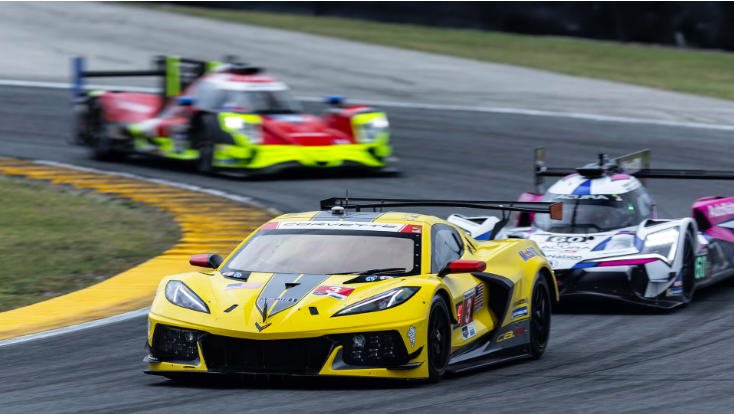
The History of Motor Racing in the World
Motor racing has captivated audiences for over a century, evolving from its modest beginnings into a global spectacle. From the dusty tracks of early endurance races to the high-tech circuits of Formula 1, the sport has continually pushed the boundaries of speed, skill, and innovation.
This journey through time reveals not only the thrilling competitions and legendary drivers but also the technological advancements and cultural impacts that have shaped motor racing into what it is today. Join us as we explore the fascinating history of motor racing, tracing its roots and celebrating the milestones that have defined this exhilarating sport.
Origins of Motor Racing
The Birth of Motor Racing
The roots of motor racing can be traced back to the late 19th century. The first recorded motor race took place in 1894, organized by the Parisian newspaper Le Petit Journal. This event, a 78-mile race from Paris to Rouen, marked the dawn of competitive motor racing.
Early Races and Development
Following the Paris-Rouen race, numerous events emerged across Europe. These early races were typically endurance events, testing the durability and reliability of the vehicles as much as the speed.
The Evolution of Motor Racing
The Emergence of Grand Prix Racing
Grand Prix racing began in 1906 with the French Grand Prix. This race set the standard for modern Formula 1 racing, introducing circuit racing where competitors raced over multiple laps.
The Rise of IndyCar Racing
In the United States, the Indianapolis 500, first held in 1911, became the pinnacle of American motor racing. This event not only tested speed but also the strategic acumen of the drivers and teams.
Key Milestones in Motor Racing
The Establishment of Formula 1
In 1950, the FIA (Fédération Internationale de l’Automobile) introduced the Formula 1 World Championship, bringing a new level of prestige and global recognition to motor racing. This era saw legendary drivers like Juan Manuel Fangio and Stirling Moss dominate the sport.
Technological Advancements
The development of aerodynamics, safety measures, and engineering innovations have continually evolved the sport. From the introduction of the rear wing in the 1960s to the modern hybrid engines, technology has been at the forefront of motor racing.
Legendary Drivers and Their Impact
Juan Manuel Fangio: The Maestro
Fangio’s dominance in the 1950s, with five World Championships, set a benchmark for excellence in Formula 1. His precise driving and tactical brilliance earned him the nickname “El Maestro.”
Ayrton Senna: The Brazilian Legend
Ayrton Senna’s unparalleled speed and determination made him one of the most revered drivers in history. His tragic death at Imola in 1994 only heightened his legendary status.
Richard Petty: The King of NASCAR
Richard Petty’s career in NASCAR, with seven championships and 200 career wins, makes him one of the most successful and iconic drivers in stock car racing history.
The Golden Era of Motor Racing
1960s and 1970s: The Rise of Icons
This period saw the emergence of iconic drivers and teams. The rivalry between James Hunt and Niki Lauda, the dominance of Ferrari, and the innovation brought by teams like Lotus defined this era.
The Impact of Safety Innovations
The tragic accidents of the 1960s and 1970s led to significant safety improvements. The introduction of safety barriers, better car construction, and mandatory safety gear drastically reduced the fatality rate in the sport.
Modern Era of Motor Racing
Technological Marvels
The modern era is characterized by incredible technological advancements. From the use of carbon fiber in car construction to sophisticated telemetry systems, technology plays a crucial role in today’s racing.
Global Expansion and Popularity
Motor racing has become a truly global sport. Events like the Formula 1 World Championship and the World Rally Championship attract millions of fans worldwide, making it one of the most watched sports globally.
The Influence of Motor Racing on Automotive Technology
Innovation and Transfer to Consumer Cars
Many innovations developed for motor racing have found their way into consumer vehicles. Technologies such as ABS brakes, traction control, and advanced aerodynamics were first tested on the racetrack before becoming standard in production cars.
Environmental Impact and Sustainability
In recent years, the focus has shifted towards sustainability. Formula E, the all-electric racing series, exemplifies the sport’s commitment to environmental stewardship and innovation in green technology.
The Future of Motor Racing
Emerging Technologies
The future of motor racing promises even more technological advancements. Autonomous vehicles, electric powertrains, and enhanced connectivity are poised to transform the sport.
Inclusivity and Diversity
There is a growing emphasis on inclusivity and diversity within motor racing. Initiatives to encourage female drivers and promote diversity in all aspects of the sport are gaining momentum.
Conclusion
Motor racing’s rich history is a testament to human ingenuity, passion, and the relentless pursuit of excellence. From its humble beginnings to its current status as a global phenomenon, motor racing continues to captivate and inspire. As we look to the future, the sport’s commitment to innovation and sustainability ensures that it will remain at the forefront of technological and competitive excellence.
Frequently Asked Questions (FAQs)
Who was the first winner of the Formula 1 World Championship?
The first winner of the Formula 1 World Championship was Giuseppe Farina in 1950, driving for Alfa Romeo.
What is the significance of the Indianapolis 500 in motor racing?
The Indianapolis 500, first held in 1911, is one of the oldest and most prestigious motor racing events globally. It is known for its rich history, high-speed competition, and strategic complexity.
How has technology impacted motor racing?
Technology has revolutionized motor racing, improving car performance, safety, and race strategy. Innovations such as aerodynamics, telemetry, and hybrid engines have significantly enhanced the sport.
What is Formula E, and why is it important?
Formula E is an all-electric racing series that highlights the potential of electric vehicles in motorsport. It promotes sustainability and innovation in green technology, making it a crucial platform for the future of motor racing.
Who is considered the greatest driver in motor racing history?
Opinions vary, but drivers like Juan Manuel Fangio, Ayrton Senna, and Michael Schumacher are often cited as some of the greatest in motor racing history due to their extraordinary achievements and impact on the sport.

Motor Racing
Rick Mears: The Oval Master
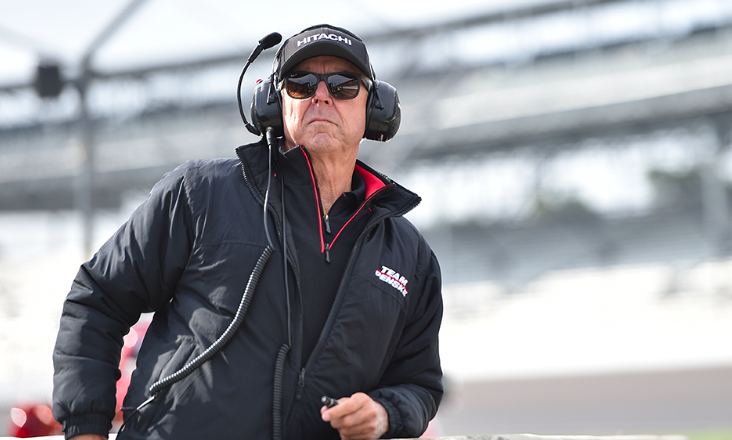
Rick Mears: The Oval Master
Rick Mears is a name synonymous with excellence in IndyCar racing, particularly on oval tracks. Known for his calm demeanor and strategic approach, Mears has etched his name into the annals of motorsport history. His prowess at the Indianapolis Motor Speedway, coupled with his remarkable career achievements, makes him a true legend of the sport. This article delves into the life, career, and legacy of Rick Mears, the Oval Master.
Early Life and Introduction to Racing
A Passion for Speed
Born on December 3, 1951, in Wichita, Kansas, Rick Mears grew up in a family passionate about motorsports. His father, Bill Mears, was an off-road racing enthusiast, and this early exposure to racing ignited Rick’s love for speed and competition. The Mears family later moved to Bakersfield, California, where Rick’s racing career would begin to take shape.
First Steps in Racing
Mears’ racing journey started in off-road and dirt track racing, following in his father’s footsteps. He quickly made a name for himself, showcasing a natural talent for driving and a strategic mind that would become his trademark. These early experiences laid the foundation for his transition to open-wheel racing, where he would achieve unprecedented success.
Rise to Prominence in IndyCar Racing
Joining Team Penske
Rick Mears’ big break came in 1978 when he joined the prestigious Team Penske. Under the guidance of team owner Roger Penske, Mears honed his skills and developed into a formidable competitor. His debut season saw immediate success, with Mears winning his first IndyCar race at Milwaukee.
First Indianapolis 500 Victory
Mears’ first taste of glory at the Indianapolis Motor Speedway came in 1979. In only his second attempt, he won the Indianapolis 500, showcasing his exceptional talent on oval tracks. This victory marked the beginning of a legendary career at the Brickyard.
Dominance at the Indianapolis Motor Speedway
Four-Time Indy 500 Champion
Rick Mears is one of only three drivers to win the Indianapolis 500 four times, a feat he accomplished in 1979, 1984, 1988, and 1991. His calm and strategic approach to racing, combined with his unparalleled skill on oval tracks, made him a perennial favorite at the Indy 500.
Record Pole Positions
In addition to his four victories, Mears holds the record for the most pole positions at the Indianapolis 500, with six pole starts. His ability to consistently qualify at the front of the grid is a testament to his speed and precision on the track.
Career Achievements and Records
IndyCar Series Championships
Mears’ success extended beyond the Indianapolis 500. He won the IndyCar Series championship three times, in 1979, 1981, and 1982. These titles underscore his dominance in the sport and his ability to perform at the highest level consistently.
Wins and Podium Finishes
Throughout his career, Mears amassed 29 wins and 75 podium finishes in the IndyCar Series. His consistency and ability to compete at the top level for an extended period are hallmarks of his illustrious career.
Challenges and Comebacks
Overcoming Injuries
Mears’ career was not without its challenges. In 1984, he suffered a severe foot injury in a crash at Sanair Super Speedway in Quebec, Canada. Despite the severity of the injury, Mears made a remarkable comeback, returning to racing and continuing to achieve success. His resilience and determination in the face of adversity are inspirational.
Adapting to Changes
The landscape of IndyCar racing evolved during Mears’ career, with technological advancements and changes in regulations. Mears’ ability to adapt to these changes and continue performing at a high level is a testament to his versatility and intelligence as a driver.
Impact on Motorsport
Mentorship and Legacy
After retiring from full-time racing in 1992, Mears remained involved in motorsport as a consultant and mentor for Team Penske. His wealth of knowledge and experience has been invaluable in guiding the next generation of drivers. Mears’ legacy extends beyond his on-track achievements, influencing and shaping the future of the sport.
Safety Advocate
Mears has also been a vocal advocate for safety in motorsport. His experiences and insights have contributed to the development of safer racing practices and technologies, helping to protect drivers and improve the overall safety of the sport.
Personal Life and Interests
Family and Support
Mears’ success on the track has been supported by a close-knit family. He is married to Chris Mears, and together they have two children. The Mears family has been a constant source of support throughout his career, providing the stability and encouragement needed to excel in the high-pressure world of racing.
Life After Racing
In retirement, Mears has enjoyed various hobbies and interests, including boating and spending time with his family. His passion for motorsport remains undiminished, and he continues to be a respected figure in the racing community.
Rick Mears’ Enduring Legacy
An Icon of Oval Racing
Rick Mears’ legacy as the Oval Master is cemented by his unparalleled success on oval tracks, particularly at the Indianapolis Motor Speedway. His calm demeanor, strategic approach, and exceptional skill have made him a true icon of the sport.
Influence on Future Generations
Mears’ impact on motorsport extends beyond his racing achievements. As a mentor, consultant, and safety advocate, he has influenced and inspired countless drivers and contributed to the advancement of the sport.
Conclusion
Rick Mears’ career is a remarkable story of talent, perseverance, and success. From his early days in off-road racing to his dominance at the Indianapolis Motor Speedway, Mears has left an indelible mark on motorsport. His legacy as the Oval Master will continue to inspire and influence future generations of racers, ensuring that his contributions to the sport are remembered and celebrated for years to come.
Frequently Asked Questions (FAQs)
What are Rick Mears’ most significant achievements?
Rick Mears’ most significant achievements include winning the Indianapolis 500 four times and securing six pole positions at the event, both records that highlight his exceptional skill on oval tracks.
How did Rick Mears contribute to driver safety in motorsport?
Mears has been a vocal advocate for driver safety, contributing to the development of safer racing practices and technologies through his insights and experiences.
What other racing disciplines did Rick Mears excel in?
While Mears is best known for his success in IndyCar racing, he also competed in off-road and dirt track racing early in his career, showcasing his versatility as a driver.
How has Rick Mears influenced future generations of racers?
Mears has influenced future generations through his roles as a mentor and consultant for Team Penske, passing on his knowledge and experience to young drivers and helping shape the future of the sport.
What honors and recognitions has Rick Mears received?
Rick Mears has been inducted into multiple Halls of Fame, including the Motorsports Hall of Fame of America, recognizing his outstanding contributions and achievements in motorsport.
Motor Racing
A.J. Foyt: The All-American Racer
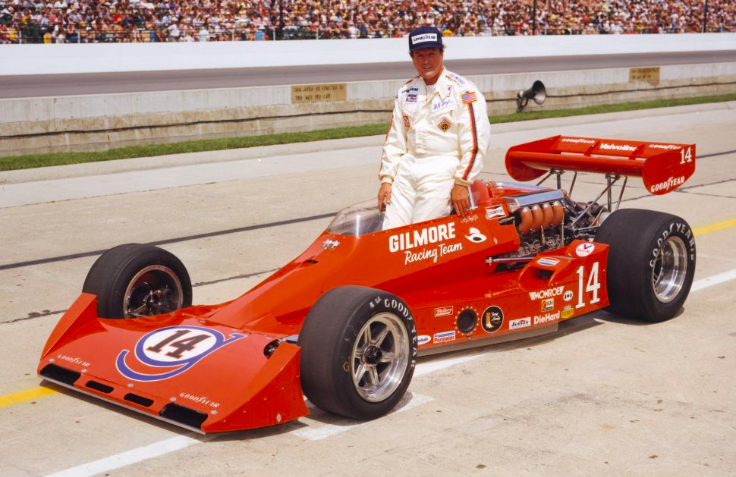
A.J. Foyt: The All-American Racer
A.J. Foyt stands as a towering figure in the world of motorsport, renowned for his unparalleled success across multiple racing disciplines. From open-wheel racing to endurance events, Foyt’s career is a testament to versatility, longevity, and sheer determination. This article delves into the life, career, and enduring legacy of one of America’s most celebrated racing icons.
Early Life and Introduction to Racing
A Passion for Speed
Born on January 16, 1935, in Houston, Texas, Anthony Joseph Foyt Jr. discovered his passion for speed at an early age. Growing up in a family deeply rooted in the automotive industry, young Foyt was naturally drawn to racing. His father, a mechanic, introduced him to the world of cars, igniting a lifelong love for motorsport.
First Steps in Racing
Foyt began his racing career in midget cars, a popular form of auto racing in the United States. His natural talent quickly became evident as he won numerous local and regional events. These early victories paved the way for his transition to more prominent racing series.
Dominance in IndyCar Racing
Four-Time Indy 500 Champion
A.J. Foyt’s name is synonymous with the Indianapolis 500, one of the most prestigious events in motorsport. Foyt achieved a record-breaking four victories at the Indy 500 (1961, 1964, 1967, and 1977), showcasing his exceptional skill and tenacity. His 1977 win was particularly historic, as he became the first driver to win the race four times.
USAC and CART Championships
Beyond the Indy 500, Foyt’s dominance extended to the United States Auto Club (USAC) and Championship Auto Racing Teams (CART) series. He secured seven USAC National Championships, further cementing his status as one of the greatest drivers in American motorsport history.
Success in Multiple Racing Disciplines
NASCAR Victories
Foyt’s versatility is exemplified by his success in NASCAR. He won seven NASCAR races, including the prestigious Daytona 500 in 1972. His ability to seamlessly transition between different types of racing cars demonstrated his extraordinary adaptability and driving prowess.
Endurance Racing Achievements
Foyt also made his mark in endurance racing, most notably winning the 24 Hours of Le Mans in 1967 alongside Dan Gurney. This victory highlighted his ability to excel in long-distance events, further showcasing his diverse racing talent.
Innovations and Contributions to Motorsport
Pioneering Safety Measures
Throughout his career, Foyt was not only a fierce competitor but also a vocal advocate for driver safety. He played a crucial role in promoting safety innovations in motorsport, contributing to the development of safer racing equipment and track conditions.
Mentorship and Team Ownership
After retiring from full-time racing, Foyt transitioned to team ownership and mentorship roles. His A.J. Foyt Enterprises team has competed in various racing series, and he has nurtured numerous young talents, passing on his wealth of knowledge and experience.
Personal Challenges and Triumphs
Overcoming Injuries
Foyt’s career was not without its challenges. He endured several severe injuries, including a near-fatal crash in 1965. Despite these setbacks, his resilience and determination saw him return to racing, exemplifying his indomitable spirit.
Legacy of Perseverance
Foyt’s perseverance extended beyond the racetrack. His personal and professional journey is a testament to overcoming adversity and achieving greatness through hard work and dedication.
Honors and Recognition
Induction into Halls of Fame
Foyt’s contributions to motorsport have been widely recognized. He has been inducted into multiple Halls of Fame, including the International Motorsports Hall of Fame and the NASCAR Hall of Fame. These honors celebrate his remarkable achievements and lasting impact on the sport.
Tributes and Memorials
Numerous tributes and memorials have been dedicated to Foyt, celebrating his legacy. Tracks, races, and awards have been named in his honor, ensuring that his contributions to motorsport are remembered for generations to come.
A.J. Foyt’s Enduring Legacy
Inspiration for Future Generations
Foyt’s story serves as an inspiration for aspiring racers worldwide. His journey from a young boy with a passion for speed to a motorsport legend embodies the pursuit of excellence and the power of perseverance.
Continued Influence in Motorsport
Even in retirement, Foyt’s influence continues to be felt in the racing world. His team remains active in various racing series, and his commitment to innovation and safety continues to shape the sport.
Conclusion
A.J. Foyt’s legacy is one of remarkable achievements, resilience, and profound impact on motorsport. His versatility, success across multiple disciplines, and dedication to safety have left an indelible mark on the racing world. As we celebrate Foyt’s contributions, we recognize not only his extraordinary career but also the enduring spirit of a true All-American racer.
Frequently Asked Questions (FAQs)
What are A.J. Foyt’s most significant achievements?
A.J. Foyt’s most significant achievements include four victories at the Indianapolis 500, seven USAC National Championships, and a win at the 24 Hours of Le Mans in 1967.
How did A.J. Foyt contribute to driver safety in motorsport?
Foyt was a vocal advocate for driver safety, promoting innovations in racing equipment and track conditions to enhance driver protection.
What other racing disciplines did A.J. Foyt excel in?
In addition to IndyCar racing, Foyt achieved success in NASCAR, winning the Daytona 500, and in endurance racing, winning the 24 Hours of Le Mans.
How has A.J. Foyt influenced future generations of racers?
Foyt has influenced future generations through his team ownership and mentorship roles, passing on his knowledge and experience to young racing talents.
What honors and recognitions has A.J. Foyt received?
Foyt has been inducted into multiple Halls of Fame, including the International Motorsports Hall of Fame and the NASCAR Hall of Fame, recognizing his outstanding contributions to motorsport.
Motor Racing
Mario Andretti: Master of Motorsports
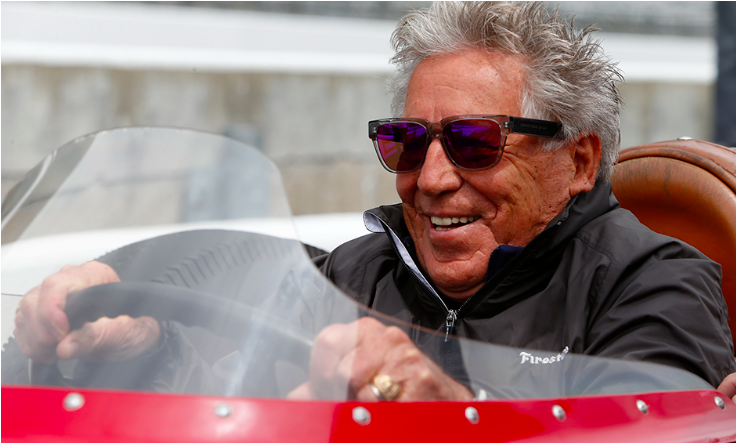
Mario Andretti: Master of Motorsports
Mario Andretti: The All-Rounder
Mario Andretti, a legendary figure in motorsport, is celebrated for his versatility and success across multiple racing disciplines. Born on February 28, 1940, in Montona, Italy, Andretti’s illustrious career spans Formula 1, IndyCar, and sports car racing, making him one of the most accomplished drivers in history. His ability to excel in various forms of motorsport has earned him a unique and revered place in racing lore, embodying the spirit of a true all-rounder.
Early Life and Career Beginnings
Childhood and Early Interests
Mario Andretti was born on February 28, 1940, in Montona, Italy, which is now Motovun, Croatia. Growing up during World War II, Andretti’s early years were filled with challenges. However, his passion for racing was ignited when his family moved to the United States in 1955. Settling in Nazareth, Pennsylvania, the Andretti family found a new beginning, and Mario, along with his twin brother Aldo, began pursuing their shared dream of racing.
First Steps in Racing
Andretti’s first foray into competitive racing began with midget cars in the late 1950s. His natural talent quickly became evident as he started winning local races. By the early 1960s, Andretti had moved up to sprint cars and then to IndyCars, where his career truly began to take off.
Dominance in IndyCar Racing
Early Success and Championships
Mario Andretti’s impact on IndyCar racing is profound. He won his first IndyCar race in 1965 and quickly established himself as a force to be reckoned with. In 1969, Andretti won the Indianapolis 500, cementing his place in racing history. His consistency and skill led to four IndyCar National Championships in 1965, 1966, 1969, and 1984.
Driving Style and Technique
Andretti’s driving style is characterized by his aggressive yet controlled approach. He had an innate ability to read the track and make split-second decisions, which often gave him an edge over his competitors. His adaptability allowed him to excel on both oval tracks and road courses, showcasing his versatility.
Formula 1 Career
Transition to Formula 1
In 1968, Mario Andretti made his debut in Formula 1 with Lotus. Over the next few years, he competed sporadically in the series while continuing to dominate in IndyCar. It wasn’t until 1975, when he joined Parnelli and later Lotus full-time, that Andretti’s Formula 1 career gained momentum.
World Championship Victory
Andretti’s most significant achievement in Formula 1 came in 1978 when he won the World Championship driving for Lotus. His victory was a testament to his skill and determination, as he became one of the few drivers to achieve success in both IndyCar and Formula 1.
Versatility in Sports Car Racing
Competing in Various Disciplines
Mario Andretti’s versatility extended beyond IndyCar and Formula 1. He also competed in sports car racing, including the prestigious 24 Hours of Le Mans. In 1972, Andretti, along with teammates Jacky Ickx and Gijs van Lennep, won the 12 Hours of Sebring, further showcasing his adaptability across different racing formats.
Le Mans and Other Endurance Races
Although Andretti never clinched a victory at Le Mans, he came close several times. His best finish was second place in 1995. His participation in various endurance races highlighted his endurance and skill in handling different types of race cars.
Andretti’s Influence on Motorsport
Advocacy for Safety
Throughout his career, Mario Andretti has been a strong advocate for improved safety standards in motorsport. His efforts have contributed to significant advancements in car design, track safety, and driver protection. Andretti’s influence has helped shape modern motorsport into a safer environment for all participants.
Mentorship and Legacy
Andretti’s impact extends beyond his racing achievements. He has mentored numerous young drivers, sharing his knowledge and experience to help them succeed. His legacy is carried on by his son, Michael Andretti, and his grandson, Marco Andretti, both of whom have had successful racing careers.
Awards and Recognition
Accolades and Honors
Mario Andretti’s contributions to motorsport have been widely recognized. He has received numerous awards and honors, including being named the Driver of the Century by the Associated Press and RACER magazine. He was also inducted into the International Motorsports Hall of Fame and the National Sprint Car Hall of Fame.
Cultural Impact
Andretti’s influence extends beyond the racetrack. He has become a cultural icon, representing the spirit of racing and the pursuit of excellence. His story continues to inspire aspiring racers and motorsport enthusiasts around the world.
Andretti’s Philosophy on Racing
Adaptability and Innovation
Mario Andretti’s racing philosophy revolves around adaptability and innovation. He constantly sought new challenges and embraced different racing disciplines. His willingness to adapt to new environments and innovate his driving techniques set him apart from his peers.
Commitment and Dedication
Andretti’s commitment to his craft is unparalleled. He dedicated his life to racing, constantly striving for improvement and pushing the boundaries of what was possible. His work ethic and determination serve as a model for aspiring racers.
The Importance of Versatility in Motorsport
Andretti’s Multifaceted Career
Mario Andretti’s career is a testament to the importance of versatility in motorsport. His ability to excel in multiple disciplines, from IndyCar to Formula 1 to sports car racing, demonstrates the value of being a well-rounded driver. Andretti’s success across various formats showcases the skills and adaptability required to thrive in the competitive world of racing.
Lessons for Aspiring Racers
Aspiring racers can learn valuable lessons from Andretti’s career. Embracing versatility and being open to different racing experiences can lead to a more comprehensive understanding of the sport. Andretti’s journey highlights the importance of continuously challenging oneself and seeking new opportunities for growth.
Mario Andretti’s Enduring Legacy
Family Legacy in Racing
The Andretti family legacy in racing is a testament to Mario’s influence and passion for the sport. His son, Michael Andretti, and grandson, Marco Andretti, have continued the family tradition, achieving success in their respective careers. The Andretti name remains synonymous with excellence in motorsport.
Continued Impact on Motorsport
Mario Andretti’s impact on motorsport continues to be felt today. His contributions to safety, mentorship, and the development of the sport have left an enduring legacy. Andretti’s influence will continue to shape the future of racing for generations to come.
Conclusion: Mario Andretti: The All-Rounder
Mario Andretti’s illustrious career stands as a testament to his extraordinary versatility and skill in motorsport. His achievements across Formula 1, IndyCar, and sports car racing have cemented his status as one of the greatest drivers of all time.
Andretti’s legacy is marked not just by his numerous victories and championships but by his relentless pursuit of excellence and his ability to adapt and succeed in various racing disciplines.
As “The All-Rounder,” Mario Andretti’s name will forever be synonymous with racing greatness, inspiring future generations of drivers to push the boundaries of what is possible in the world of motorsport.
Frequently Asked Questions (FAQs)
What is Mario Andretti best known for?
Mario Andretti is best known for his versatility and success in multiple racing disciplines, including IndyCar, Formula 1, and sports car racing. He is also recognized for his 1978 Formula 1 World Championship victory.
How did Mario Andretti influence motorsport safety?
Andretti has been a strong advocate for improved safety standards in motorsport. His efforts have contributed to advancements in car design, track safety, and driver protection, making the sport safer for all participants.
What were Mario Andretti’s most significant achievements?
Andretti’s most significant achievements include winning the 1969 Indianapolis 500, the 1978 Formula 1 World Championship, and four IndyCar National Championships. He has also won numerous other races and accolades throughout his career.
What is Mario Andretti’s driving style?
Andretti’s driving style is characterized by his aggressive yet controlled approach. He is known for his ability to read the track and make quick decisions, as well as his adaptability across different types of racing.
How has Mario Andretti’s legacy impacted modern motorsport?
Andretti’s legacy has had a profound impact on modern motorsport. His advocacy for safety, mentorship of young drivers, and versatile career have helped shape the sport into what it is today. His influence continues to inspire and guide future generations of racers.
-

 Football1 month ago
Football1 month agoMeet the World Football Celebrities and Their Stories
-

 Game3 weeks ago
Game3 weeks agoThe Ultimate Guide to General Multi-Sport Events
-

 Basketball1 month ago
Basketball1 month agoUnusual Personalities of Basketball Stars: Off-Court Eccentricities
-

 NBA1 month ago
NBA1 month agoTop NBA Celebrities in the World: The Biggest Stars
-

 Tennis2 weeks ago
Tennis2 weeks agoLegends of the Court: Celebrating the Top Tennis Players of All Time
-
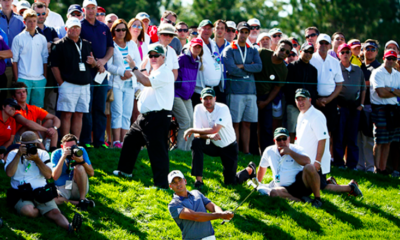
 Golf1 week ago
Golf1 week agoMasters of the Green: Celebrating Golf’s Elite
-

 Sports1 month ago
Sports1 month agoColumbia Sportswear: Innovating Durable Outdoor Gear for Adventurers
-

 Sports1 month ago
Sports1 month agoPele: The Legendary Journey of Football’s Greatest Icon | The Immortal King of Football



